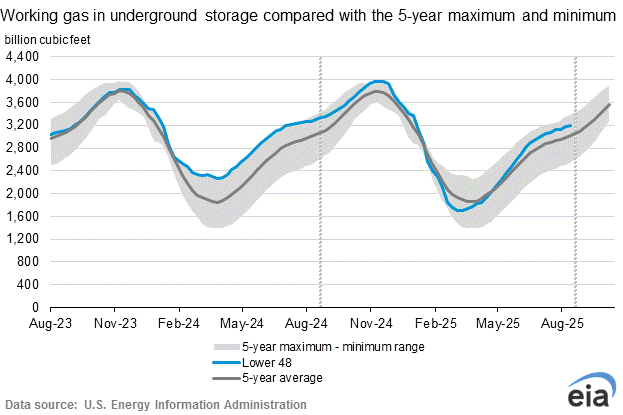Following on yesterday's apology (and Rickroll):

First up, the Storage Report:
....Summary
Working gas in storage was 1,883 Bcf as of Friday, April 16, 2021, according to EIA estimates. This represents a net increase of 38 Bcf from the previous week. Stocks were 251 Bcf less than last year at this time and 12 Bcf above the five-year average of 1,871 Bcf. At 1,883 Bcf, total working gas is within the five-year historical range.
For information on sampling error in this report, see Estimated Measures of Sampling Variability table below.

Note: The shaded area indicates the range between the historical minimum and maximum values for the weekly series from 2016 through 2020. The dashed vertical lines indicate current and year-ago weekly periods.....
The estimates were around 50 Bcf so a bullish report. Looking at the chart you can see how far above the five-year range the gas in storage was in October - November 2020, and how fast the inventory was drawn down to cover the demand from the bitterly cold January weather.
Also from the EIA:
Natural Gas Weekly Update for week ending April 21, 2021
| Release date: April 22, 2021
In the News:
Natural gas storage inventories in Europe enter injection season 11% below the five-year average
Working natural gas inventories in Europe as of March 31, 2021—the traditional end of the winter heating season—totaled 1,087 billion cubic feet (Bcf), or 31% of capacity, according to data from the Gas Infrastructure Europe’s (GIE) Aggregated Gas Storage Inventory (AGSI+). This year’s end-of-season inventories in Europe were 11% (133 Bcf) lower than the previous five-year (2016‒2020) average and 44% lower than record-high storage inventories last year. Working natural gas inventories in Europe at the end of March 2021 were the third-lowest reported in 11 years of publicly available natural gas storage data published by AGSI+. The lowest reported end-of-season working natural gas stock level for March was in 2018 at 620 Bcf.
Europe’s natural gas inventories entered the winter heating season in November 2020 at 3,423 Bcf (95% full)—the second-highest end-of-injection season storage level in Europe in over a decade—but declined rapidly in January and February 2021 because of extended periods of cold weather, particularly in Northwest Europe. In February, cold weather prompted record withdrawals from storage amounting to 713 Bcf—one of Europe’s largest monthly stock draws in recent years—which was 29% higher than the five-year average February stock draw.
Regionally, the European natural gas pipeline grid is not fully integrated between northern and southern parts, so countries have to rely on domestic natural gas storage and LNG imports to meet peak demand, particularly in winter months. As weather-driven demand for space heating from the residential and commercial sectors increased in Europe in the later months of winter 2020‒2021, and domestic natural gas storage in several countries was getting rapidly depleted, additional flexible natural gas supplies, including imports of liquefied natural gas (LNG), were required to meet growing demand. Europe’s LNG imports have been increasing since February 2021, and a combined LNG send out from Europe’s import terminals grew from 5.0 Bcf/d in January (monthly average) to 7.0 Bcf/d in February, 9.2 Bcf/d in March, and 11.1 Bcf/d in April, according to data from the GIE’s Aggregated LNG Storage Inventory (ALSI).
The United States has played a major role in supplying the recent increase in LNG imports to Europe because the United States is the world’s largest supplier of flexible LNG volumes, which suppliers of U.S. LNG can ship on a spot basis to various markets worldwide. Throughout 2020 and in January 2021, more than half of U.S. LNG exports were shipped to Asia because a prolonged period of extremely cold weather and unplanned outages at LNG export facilities in several countries reduced global LNG supply and led to record-high spot LNG prices in Asia. In February 2021, more than half (4.2 Bcf/d or 55% of the total) of U.S. LNG exports went to Europe, according to the U.S. Department of Energy’s LNG Monthly Report. U.S. Energy Information Administration estimates that of the 10.5 Bcf/d of LNG shipments that left the United States in March 2021 and reached a destination country as of April 20, 2020, 4.1 Bcf/d arrived in Europe....
....MUCH MORE